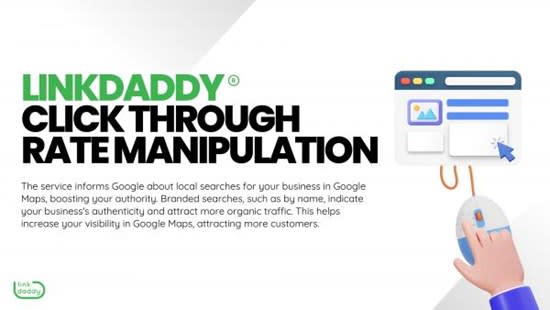CTR Control: A Game Changer for Digital Campaigns
The surge of CTR control has actually indisputably transformed digital advertising techniques, offering marketers with tools to boost involvement and drive web traffic properly. Methods such as A/B screening and customized web content have confirmed to generate significant improvements in click-through prices. However, as brands significantly leverage these techniques, the ethical implications of such techniques necessitate analysis. Balancing the quest of maximized metrics with the need for authentic target market connections presents a vital difficulty for online marketers today. What ramifications might this balancing act hold for the future of electronic campaigns?
Recognizing CTR Manipulation
Although click-through price (CTR) adjustment may appear like a simple strategy in digital advertising and marketing, it includes a variety of approaches targeted at synthetically blowing up engagement metrics. This control can take different kinds, consisting of making use of click farms, robots, or deceitful ad positionings that misdirect consumers into clicking. These techniques can endanger the integrity of performance information, making it challenging for online marketers to determine the genuine effectiveness of their projects.
Additionally, CTR manipulation elevates ethical problems, as it threatens the openness of digital marketing. The reliance on inflated metrics can bring about misguided advertising choices, skewing resource allowance and project strategies. Businesses may spend heavily in channels and strategies that appear successful however do not generate actual interaction or conversions.

Benefits of Click-Through Rate Optimization
Optimizing click-through price (CTR) is important for boosting the performance of electronic advertising and marketing campaigns. A higher CTR suggests that a bigger percentage of individuals are involving with the web content, which can result in enhanced web site web traffic and better conversion prices. By boosting CTR, brands can efficiently designate their advertising resources to initiatives that generate the greatest returns.
Among the main benefits of CTR optimization is the capacity for boosted ad placement and reduced prices - CTR Manipulation. Systems like Google Ads compensate higher CTRs with far better advertisement positioning and reduced cost-per-click (CPC), permitting marketing professionals to extend their budgets further. Furthermore, a well-optimized CTR can improve brand name presence, as higher interaction prices usually correlate with increased organic reach

Methods for Reliable CTR Manipulation
To efficiently adjust click-through rates (CTR), marketing experts can utilize a selection of critical methods that boost customer involvement and drive web traffic. One fundamental approach is optimizing advertisement copy to produce engaging and action-oriented language. CTR Manipulation. Using strong call-to-action (CTA) expressions motivates individuals to take prompt activity, raising the chance of clicks
Another efficient strategy is A/B testing, which allows marketers to official statement compare various advertisement variations. By methodically evaluating performance metrics, they can determine which elements resonate finest with the target market, consequently improving their strategies for optimal effect. In addition, leveraging visually enticing graphics and concise messaging can record attention promptly, making it extra possible that individuals will certainly engage.

Lastly, optimizing landing pages to guarantee a smooth customer experience can minimize bounce prices and encourage additional communication, eventually promoting higher CTR. By integrating these methods, marketing experts can effectively adjust CTR to attain their campaign objectives.
Determining Success in Digital Projects
Gauging success in electronic projects calls for a clear understanding of crucial performance signs (KPIs) that line up with campaign objectives. KPIs offer as quantifiable metrics that help evaluate the performance of various techniques utilized throughout the project. Usual KPIs include click-through rates (CTR), conversion rates, expense per procurement (CPA), and return on financial investment (ROI)
To effectively gauge success, it is critical to establish specific, measurable objectives at the beginning of the project. If the primary purpose is to raise brand understanding, metrics such as perceptions and interaction rates may be focused on. On the other hand, projects concentrated on straight sales would certainly take advantage of a much more comprehensive analysis see here of conversion rates and profits produced.
Normal evaluation of these KPIs enables marketers to make data-driven choices, maximizing their methods in real-time. Utilizing analytical tools can aid in monitoring efficiency and recognizing patterns, enabling for speedy More hints adjustments to improve project outcomes. Inevitably, an extensive strategy to measuring success not only highlights locations for enhancement but additionally enhances the general effectiveness of digital advertising initiatives, driving continual development and engagement in the long-term.
Future Patterns in Digital Marketing
Preparing for the future of electronic marketing exposes a landscape formed by rapid technological improvements and transforming customer habits. As artificial intelligence and machine understanding proceed to evolve, marketing professionals will significantly utilize these modern technologies to customize campaigns at an extraordinary scale. Anticipating analytics will certainly allow brands to anticipate client demands, enhancing advertisement positionings and material delivery in real time.
Additionally, the increase of voice search and wise gadgets is changing just how consumers engage with electronic material. Marketing professionals will require to adapt their approaches to guarantee visibility throughout numerous systems, including voice-activated aides. This shift requires a concentrate on conversational advertising and marketing, stressing interaction via discussion rather than standard promotional strategies.
Additionally, personal privacy issues are prompting adjustments in data collection techniques. Transparency and moral information use will come to be extremely important, driving brands to foster trust fund and loyalty amongst consumers. The ongoing advancement of social media systems will certainly likewise affect advertising techniques, with an increased emphasis on authenticity and user-generated material.
Conclusion
In summary, CTR adjustment represents a substantial advancement in digital advertising and marketing methods, offering prompt advantages through enhanced involvement metrics. The recurring development of digital marketing will certainly depend on this fragile interplay, shaping the future landscape of brand-consumer interactions.